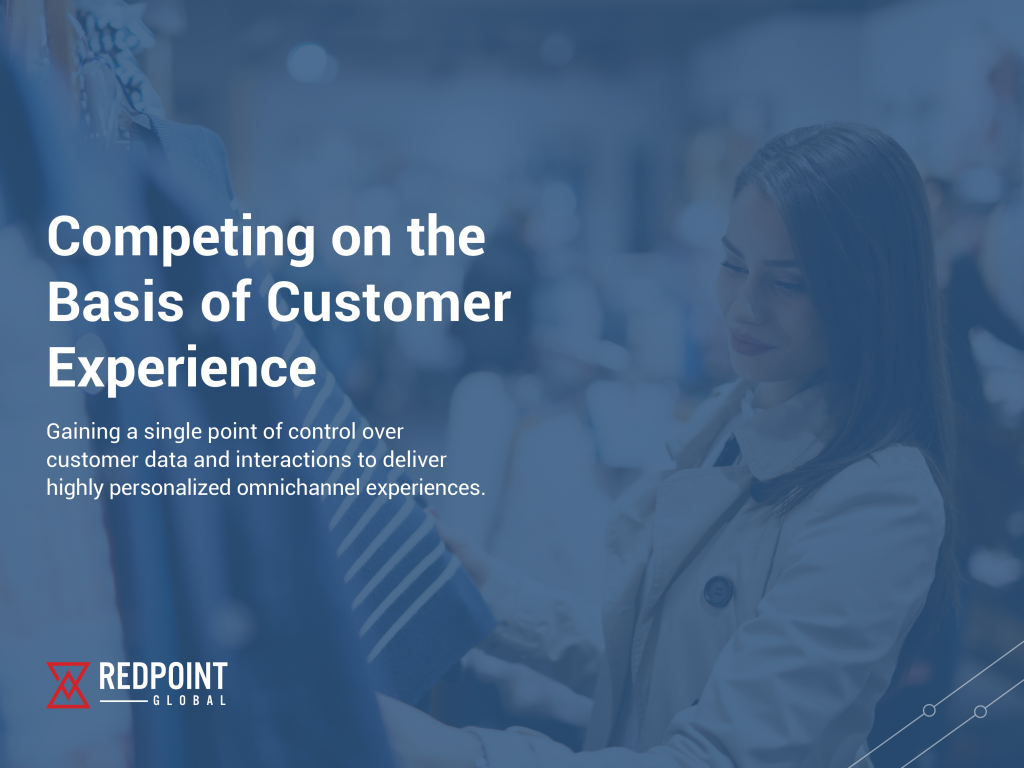 This year marks a watershed moment in the history of digital advertising. According to eMarketer, digital ad spend is estimated to surpass traditional ad spend for the first time (a record $130 billion digital spend representing 52 percent of the total ad buy). It’s easy to understand why since Americans spend more than six hours a day consuming digital media, more than any other form of media (TV, radio, newspapers, magazines) combined.
This year marks a watershed moment in the history of digital advertising. According to eMarketer, digital ad spend is estimated to surpass traditional ad spend for the first time (a record $130 billion digital spend representing 52 percent of the total ad buy). It’s easy to understand why since Americans spend more than six hours a day consuming digital media, more than any other form of media (TV, radio, newspapers, magazines) combined.
A transition from traditional marketing spend to digital, though, is not as cut and dried as it might seem. Advertisers are wary of “ad tech taxes”, which the Association of National Advertisers (ANA) recently estimated at roughly 42 cents of every media dollar. There are plenty of attribution and measurement concerns as well, just one of which is the traditional cost-per-click (CPC). This model is misaligned for marketers whose KPIs correlate clicks with engagement over the course of a buying journey.
What can stop marketers in their tracks, however, is the fear of frustrating customers with messaging that is irrelevant to a customer or prospect’s cadence in the buying journey. Showing a customer an ad for a product that they’ve already purchased introduces friction into the customer journey, creates a negative brand impression, and leaves the customer with the feeling that the brand does not really value their individual interests or preferences. According to a Nanigans report, 77 percent of consumers say they see too many retargeting ads from the same retailers. Further, 88 percent said that they’ve seen a retargeted ad for a product they’ve already purchased.
The In-House Movement for Programmatic Advertising
Personalized digital advertising is an effective way to combat message fatigue. Personalization can be accomplished with more granular segmentation – targeting an ad audience based on demographics, interests, and behaviors. According to Adlucent, 71 percent of consumers say they prefer ads tailored to their interests and shopping habits, and they were more than twice as likely to click through an ad if it was tailored to their preferences.
More and more advertisers are bringing their programmatic advertising in-house. They want to avoid ad tech fees and enjoy having more control over targeting and measurement. By reducing the fees associated with advertising and improving its effectiveness, brands see a higher return on advertising spend (ROAS) when conducting media buying in-house. When in-house media is combined with an enterprise-grade customer data platform (CDP) advertising can be more tailored, personalized, and relevant. Pairing your CDP with an anonymous data environment paves the way for CRM KPI’s to apply in the anonymous space.
Audience Suppression: Low Hanging Fruit for Ad Personalization
Leading advertisers rely on audience suppression for multiple reasons. Audience suppression is when the advertiser onboards and activates an existing customer file in order to keep the audience from seeing particular ads. For example, a marketer might suppress existing loyalty program members from ad campaigns designed to drive new enrollments in the loyalty program. Not only does this improve results of the campaigns by messaging to people who can join the loyalty program, it also means the media spend works harder against actual prospects instead of wasted against current members and it avoids harming the brand. A brand needs to treat loyal customers well; nothing says “we don’t know you or value your business” than re-inviting them to join the program.
Another suppression use case is for lapsed customers. A brand might want to place higher-value offers in front of customers whose spend has declined rather than with customers who are likely to purchase without discounts. Suppressing customers from search/keyword buys is also effective. There is no need to bid for people who already know and love you. It is better to put the search budget to work against prospects who are actively in market for your products or services.
Personalized Website Content for a First-Time Visitor
With consumers demanding personalization across the entire customer journey, brands do not have the luxury of serving up generic content, even to unknown site visitors. Delivering content that is not in the context and cadence of an individualized customer journey fails to convert customers, driving down effectiveness and brand affinity while simultaneously increasing message fatigue.
The Redpoint Digital Acquisition Platform powered by LiveRamp simplifies onboarding and activation across the digital ecosystem. Within a single UI, marketers can select audiences from known CDP as well as anonymous databases by giving marketers dynamic control over audience creation. The platform simplifies onboarding, activation, acquisition, and measurement in the digital ecosystem.
It combats message fatigue by giving marketers the ability to personalize a website experience for unknown, first-time visitors. In the past, if a first-time visitor to a brand’s website arrives without identifiers such as cookies, the site wouldn’t have insights to guide content, products, services, or offers. Today, thanks to a simple redirect that takes only milliseconds, the site is able to request an Identity Link from LiveRamp and use that identifier to personalize content and offers for the visitor – making it easier than ever to deliver the level of personalization consumers expect, from their first visit to your website.
Personalization strategies can take many forms, and organizations rightly devote a lot of attention to tailoring digital advertising to a customer or prospect’s preferences and behaviors. Another angle to personalization, as audience suppression tactics show, is minimizing message fatigue by making sure an audience doesn’t see ads or content that is not relevant to their journey. No message, in other words, is better than the wrong message. There are many ways to mitigate message fatigue. All play an important role in ensuring a consistent personalized customer experience across an entire omnichannel journey.
RELATED ARTICLES
Getting Started with Personalization: Include “Unknown” Visitors for Website Personalization
A Personalized Customer Experience Delivers Loyalty
How to Future-Proof Your Omnichannel Approach

